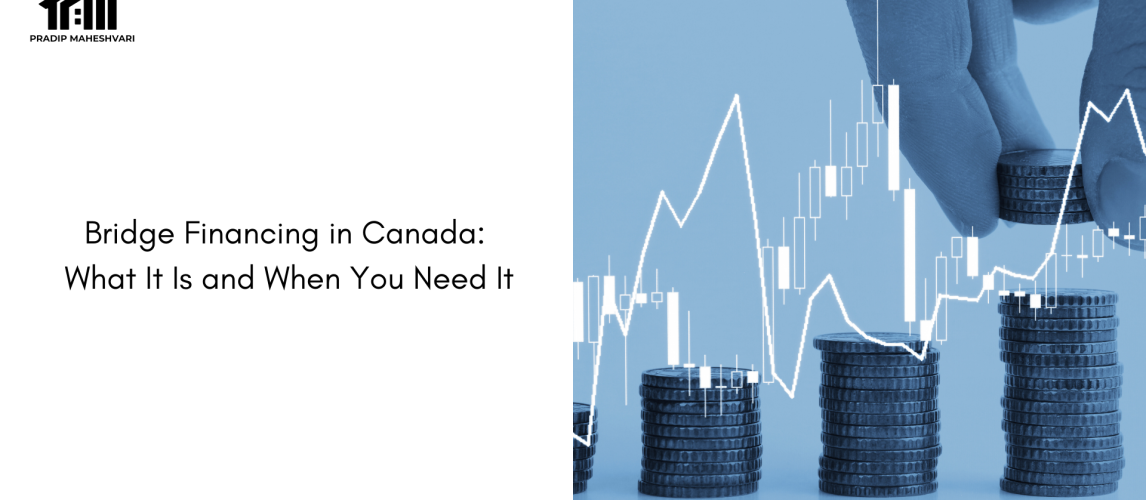Buying your dream home before selling your current one? Sounds ideal—but what about the finances?
That’s where bridge financing steps in.
Many Canadians find themselves caught in a timing gap: they’ve found their next home, but their current one hasn’t sold yet. This delay can leave you scrambling for funds to secure the new property.
Bridge financing is designed to help you “bridge” this gap—temporarily. It offers short-term access to equity in your existing home, giving you the flexibility to move forward with confidence.
What Is Bridge Financing in Canada?
Bridge financing is a short-term loan that helps homeowners use the equity from their existing home to fund the purchase of a new one.
It’s a solution often used when:
- You’ve bought a new home but haven’t sold the current one.
- Your closing dates don’t align.
- You want to avoid making a rushed sale.
This type of financing typically lasts from a few weeks to a few months and is secured against your existing home.
How Does Bridge Financing Work?
Before lenders approve a bridge loan, they require:
- A firm sale agreement for your current home.
- A firm purchase agreement for your new home.
- Sufficient equity to support the short-term loan.
For example:
Let’s say your current home sold for $600,000 but closes in 45 days, and your new home requires a $100,000 deposit today. A lender could offer you bridge financing based on the equity from your sold home to help cover this gap.
When Do You Need Bridge Financing?
You might need bridge financing if:
- You’re upgrading homes: The market moves fast. If your dream home comes along before your old one sells, bridge financing helps secure it.
- Closing dates are misaligned: Even with a firm sale, if your sale closes after your purchase, bridge financing can cover the difference.
- You want to avoid stress: Bridge loans offer peace of mind. They let you move out on your own schedule, without being rushed.
What Are the Risks and Costs?
Bridge loans aren’t without costs. Key points include:
- Interest rates are usually higher than traditional mortgages (typically prime + 2–5%).
- Administration fees may apply.
- You’ll be making payments on both mortgages if your home hasn’t sold yet.
However, because it’s short-term, many find the flexibility worth the temporary cost.
How Do You Qualify for Bridge Financing in Canada?
Lenders will typically assess:
- Your credit score.
- Firm sale agreements.
- Equity in your current property.
If everything checks out, funds can be accessed quickly, often in just a few business days.
Final Thoughts: Is Bridge Financing Right for You?
Bridge financing isn’t a long-term solution, but it’s a smart, strategic option for the right situation.
If you’re navigating a complex move or selling in a slower market, this could offer the breathing room you need. At Pradip Maheshvari Mortgages, we specialize in custom mortgage solutions. Whether you’re buying, selling, or planning ahead, we’ll help you choose the right financial strategy for your needs.


No comment yet, add your voice below!